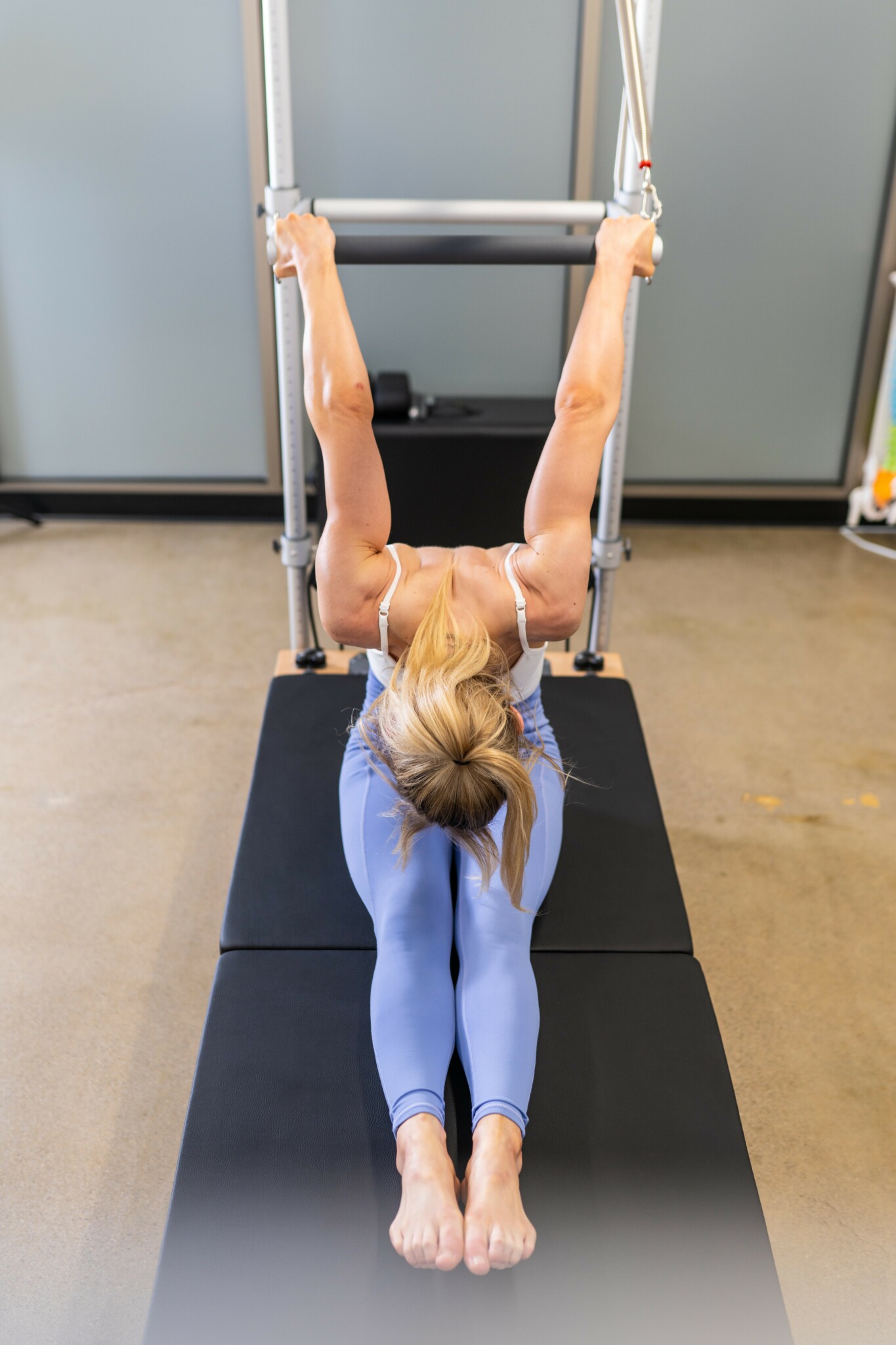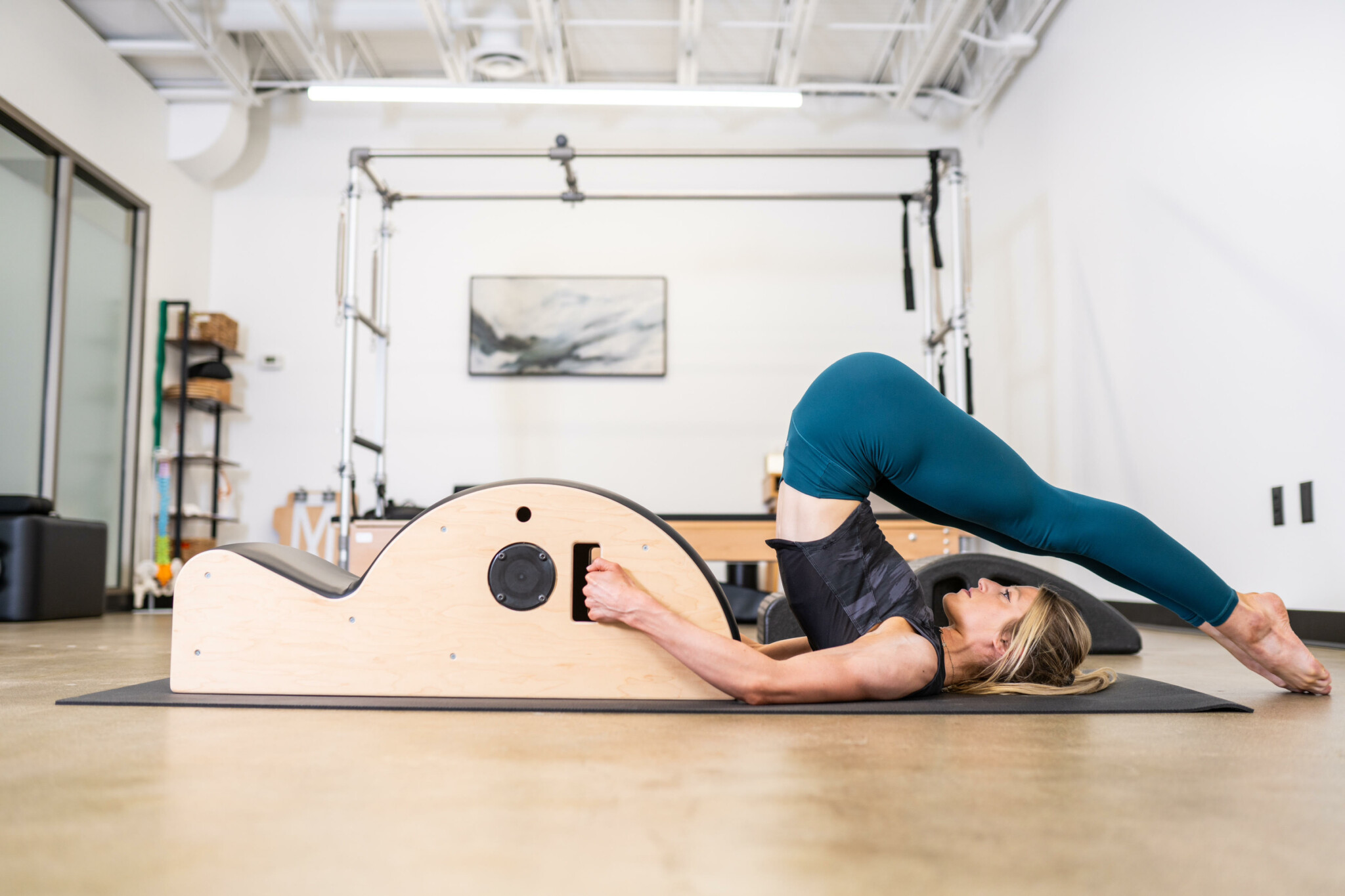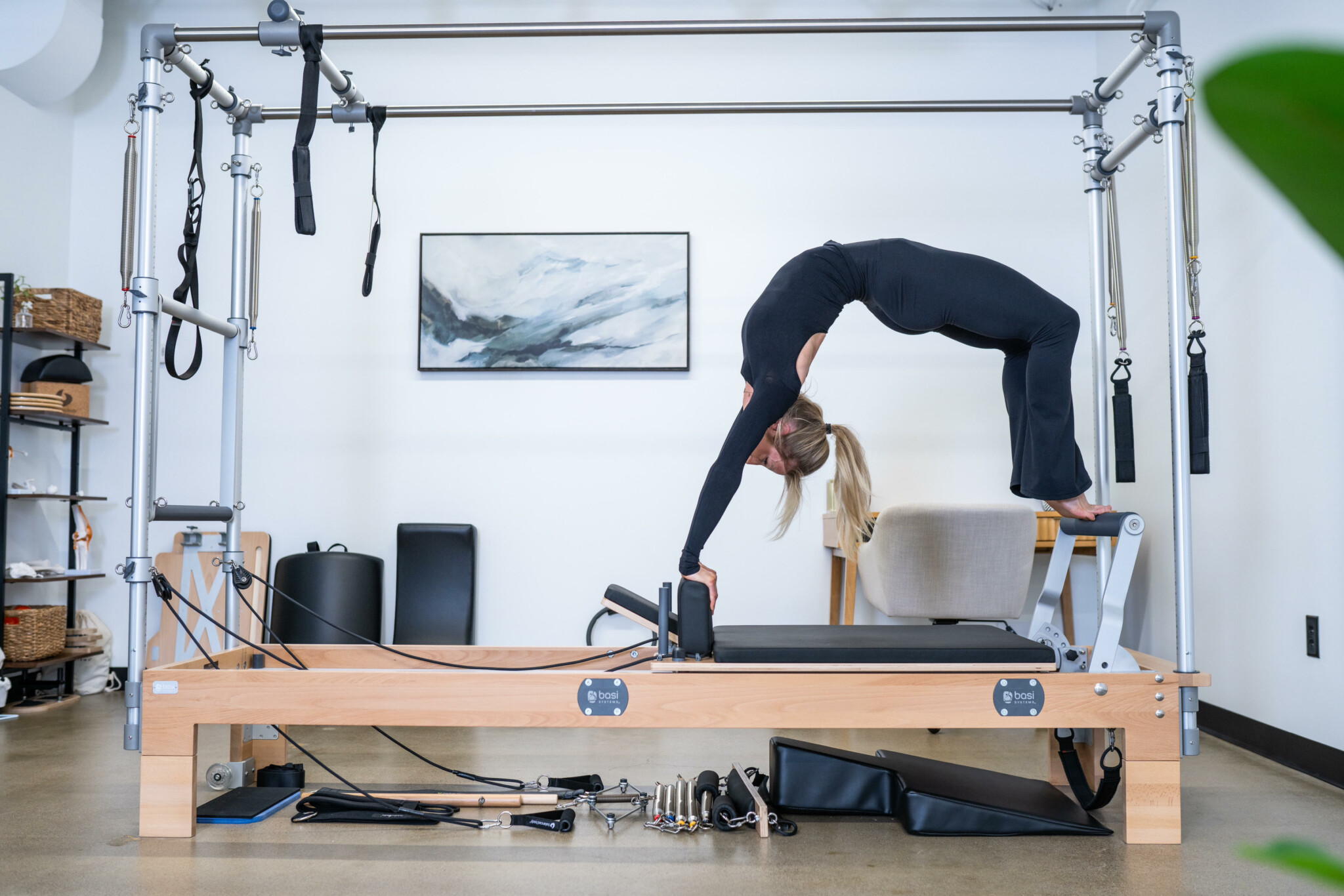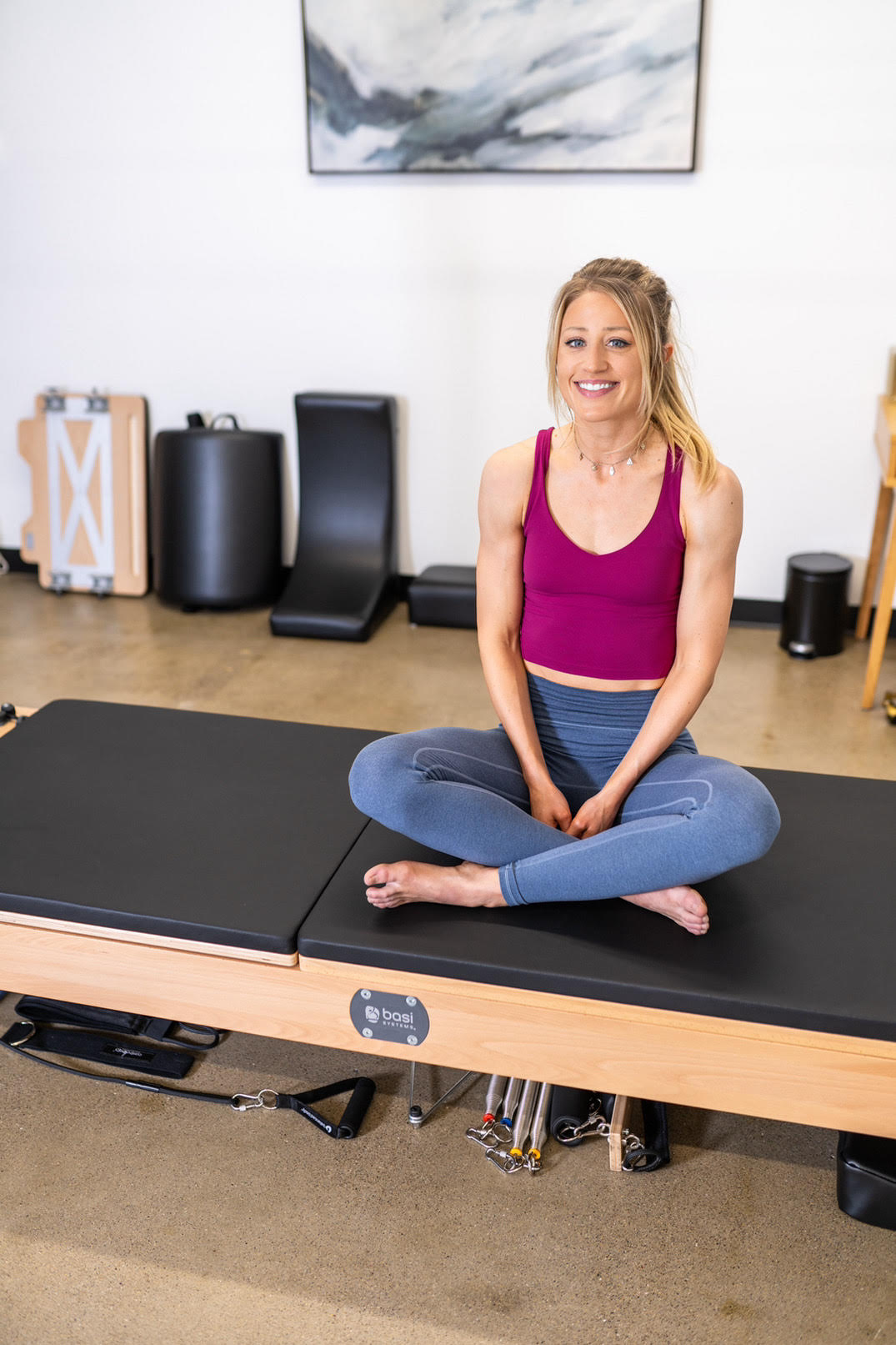Alright – so today we’ve got the honor of introducing you to Cate Swanson. We think you’ll enjoy our conversation, we’ve shared it below.
Alright, Cate thanks for taking the time to share your stories and insights with us today. Can you tell us about a time where you or your team really helped a customer get an amazing result?
Pilates isn’t just for professional athletes—it’s for anyone looking to move, feel, and perform better in their body. In my work, I’ve helped people from all walks of life: from competitive athletes recovering from sports injuries to individuals with chronic conditions like disc degeneration or arthritis, and even an amputee strengthening their spine and non-dominant arm after losing their dominant limb. I’ve guided clients through post-surgical recovery, helping them rebuild confidence and mobility, as well as those who simply want to improve their overall health, flexibility, or sport-specific performance.
What makes Pilates so powerful is its adaptability. Whether someone’s goal is to walk with less pain, regain strength after an injury, or refine their athletic movement, I help them see their body differently and create the changes necessary to move with more ease and efficiency. It’s a process of discovery, adaptation, and ultimately transformation.
One of the most rewarding aspects of my work is witnessing these changes firsthand. A professional athlete came to me after major surgery, feeling disconnected from their body and unsure if they would ever return to their sport at full capacity. Through Pilates, we rebuilt their deep core stability, retrained movement patterns, and restored their confidence. Seeing them return stronger and more resilient than before reaffirmed why I do this work.
Equally impactful was working with an older client struggling with arthritis, who had spent years believing chronic pain was inevitable. After just a few months of focused movement, they told me they could finally get out of bed in the morning without feeling like their body was working against them. That moment—watching someone rediscover the joy of movement—was just as powerful as seeing an athlete return to competition.
Sometimes, the most profound transformations are not just physical but mental. A young athlete I worked with needed more than just strength training—they needed a new way to connect with their body through mental imagery coaching. By integrating visualization techniques with movement, they improved their coordination, performance, and self-confidence. It wasn’t just about getting stronger—it was about trusting their body in an entirely new way.
Every client I work with, whether an elite athlete, an injury survivor, or someone simply seeking better movement, reminds me why I do this work. Pilates isn’t just exercise—it’s a tool for reclaiming movement, confidence, and the belief that your body is capable of change.

Cate, love having you share your insights with us. Before we ask you more questions, maybe you can take a moment to introduce yourself to our readers who might have missed our earlier conversations?
Movement has always been my passion, but my path to Pilates was shaped by personal experience, curiosity, and a desire to help others reconnect with their bodies. Initially, like many, I misunderstood Pilates as just stretching or low-impact exercise. But once I immersed myself in it, I realized it was so much more. Pilates bridges the gap between rehab and performance training, making it invaluable for everyone—from athletes to those overcoming injuries to anyone wanting to move better and feel better.
I built my Pilates studio to specialize in working with athletes and active individuals, but my approach is far from one-size-fits-all. I tailor training to each client’s unique movement patterns, helping them build strength and efficiency from the inside out. My work goes beyond guiding exercises—I focus on:
Rebuilding strength post-injury or post-surgery, helping clients return to their sport or daily activities stronger and more resilient.
Optimizing movement efficiency for athletes, improving mechanics to enhance performance, agility, and injury prevention.
Restoring function and confidence for individuals with chronic pain or mobility limitations, such as arthritis or postural imbalances.
Mental imagery coaching for performance enhancement, using visualization techniques to refine movement patterns and build confidence.
My approach isn’t about checking off exercises—it’s about creating lasting movement change that extends far beyond a Pilates session. I don’t just teach Pilates—I teach people how to understand their own bodies better, bridging gaps they didn’t even know existed.
What sets my work apart is my emphasis on education and collaboration. Whether I’m working with an athlete alongside their coach, supporting a post-rehab client’s transition back to sport, or guiding someone to move without pain, my goal is always to empower my clients with tools that make a real impact in their performance, recovery, and daily life.

Can you tell us about what’s worked well for you in terms of growing your clientele?
The most effective way I’ve grown my clientele is through face-to-face interactions. Pilates is something people need to experience to truly understand its impact—especially athletes and highly active individuals who may not realize how much it can improve their performance, recovery, and movement efficiency.
Hosting workshops, collaborating with sports facilities, and leading introductory sessions have been the biggest growth drivers. When someone physically feels the difference Pilates makes—how a small adjustment can unlock strength, relieve tension, or enhance movement—it changes their perception entirely.
Word-of-mouth has also been incredibly powerful. When clients experience real results—whether it’s pain relief, better movement, or improved performance—they naturally share their success with teammates, trainers, and friends. My focus on teaching rather than just instructing keeps clients engaged and committed, leading to strong referrals.
Social media and online presence are valuable, but nothing has been as impactful as getting people moving with me. Pilates is a sensory experience—when people feel the difference, it clicks in a way that words alone can’t convey.

Let’s talk about resilience next – do you have a story you can share with us?
Resilience isn’t just something I teach—it’s something I’ve lived. As someone who thrives on movement, I train in Muay Thai, Brazilian Jiu-Jitsu, snowboarding, weightlifting, and, of course, Pilates. But I’ve also faced my own physical challenges, most notably navigating life with endometriosis and undergoing major surgery the same year I opened my business.
Running a business while managing chronic illness required a level of adaptability I hadn’t expected. There were days of excruciating pain and exhaustion, yet I had to show up—for my clients, my training, and myself. Pilates became more than just a modality I teach—it became essential to my own rehabilitation and long-term health management.
Just 12 weeks post-surgery, I’m still guiding myself through recovery—rebuilding strength, regaining mobility, and staying patient with the process. This experience has given me even deeper empathy for my clients, whether they’re recovering from injuries, dealing with chronic pain, or seeking longevity in their movement.
Understanding movement from both a professional and personal perspective allows me to connect with my clients in a way that goes beyond instruction. I know what it’s like to rebuild, to trust the process even when it’s frustrating, and to find strength in resilience.
To me, resilience means adapting, learning, and moving forward—even when things don’t go as planned. It’s about meeting your body where it is, working with it rather than against it, and knowing that with the right approach, you can always rebuild and come back stronger.
Contact Info:
- Website: https://pilatesforathletes.com
- Instagram: https://www.instagram.com/pilatesforathletesmn/
- Linkedin: https://www.linkedin.com/in/cateswanson/



Image Credits
Billy Perrier.


